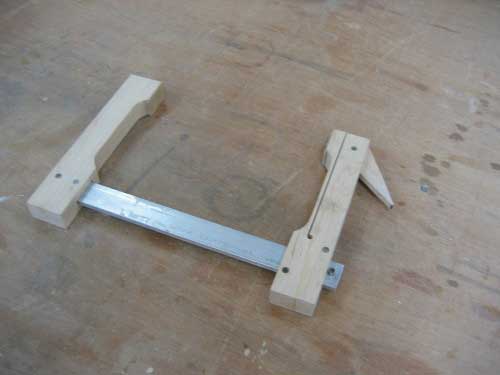Question
A while back I ordered a Martin guitar kit as a birthday present for my son. The deal was that we would build it together. Building an acoustic guitar required gobs of cam clamps. Grizzly has them for $10 or so, but I needed about thirty of them. So using the picture in the Grizzly catalogue as a guide, I drew a plan and made my own. I actually made over thirty of them.
Most are 6", but I made four 4", and four 8". They all open about 10" or so. They worked great on the guitar, but I thought I'd never get any other use out of them. That’s not so, and I use them often. They're easy to use, very light and small, and when glued on pieces of leather they protect the work. Here is a picture of what I made.

Forum Responses
(Cabinetmaking Forum)
From contributor J:
They look good to me, did you use maple?
On the moveable head, the pins only go through the maple. They straddle the aluminum. It's important to make the inside to inside distance correct on these pins so that the head ends up square to the aluminum.
If it's under square, you can stick a metal file in the mortise and whittle the pin down until the head is square. The cam mechanism is the tear-shaped piece sticking out of the moveable head. Its pin is off-center to give the cam action.
So to use the clamp, you slide the moving head closed until it's tight on the work piece, then push the cam forward. It pushes the skinny piece of wood on the head against the work piece and wedges the head on the aluminum at the same time. Look at the position of the pins on the moving head.